Key takeaways:
- Modern composition techniques emphasize self-discovery and personal expression over strict rules.
- Key elements of effective composition include structure, melody, and rhythm, all essential for emotional impact.
- Utilizing contrast and negative space enhances listener engagement and allows core ideas to resonate more deeply.
- Incorporating rhythm in both music and visual design guides audience experience and can create lasting impressions.
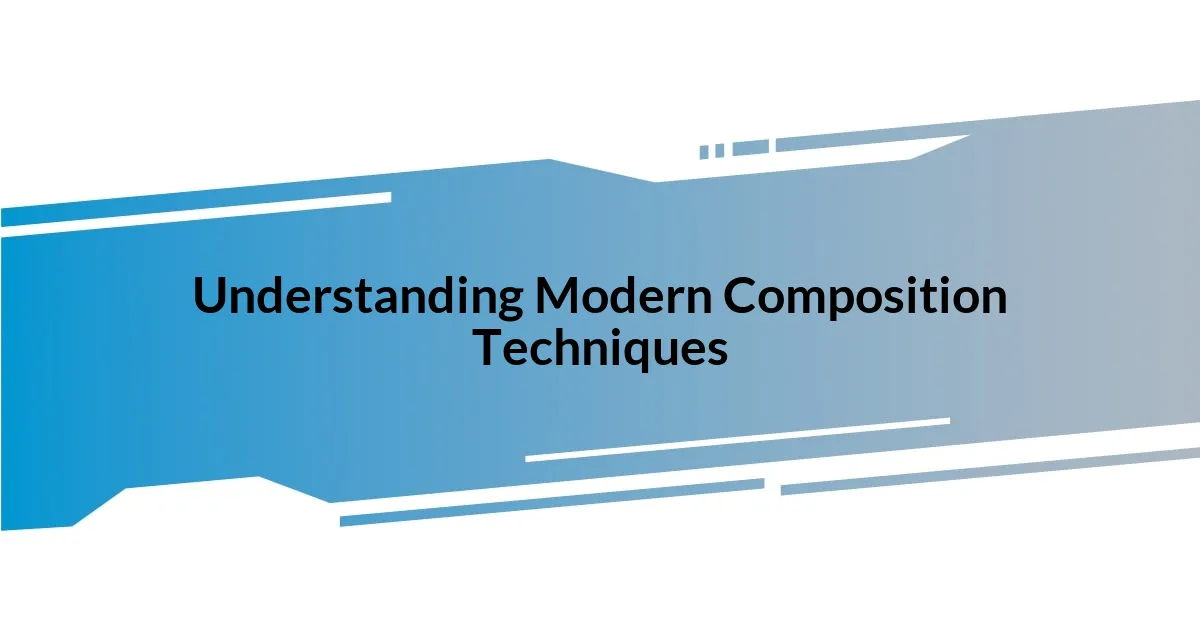
Understanding Modern Composition Techniques
Modern composition techniques often invite a more fluid approach to creating music. I remember the first time I encountered minimalist composition while studying at a music workshop—it felt revolutionary. The simplicity of repetition and subtle variations opened my eyes to how complex emotions can emerge from seemingly straightforward ideas.
As I delved deeper into these techniques, I was struck by how technology has reshaped our creative landscape. For instance, digital audio workstations (DAWs) provide us with tools that were once unimaginable. Have you ever considered how layers of sound, built through loops and samples, can transform an ordinary melody into a rich tapestry of audio? It’s fascinating to think about the role of accessibility in fostering innovation.
One of the most impactful lessons I’ve learned is that composition today isn’t about following strict rules but rather finding your unique voice. In my own journey, experimenting with unconventional time signatures felt daunting at first, but it pushed my boundaries and uncovered new perspectives. I often ask myself, what would happen if I stepped outside my comfort zone? Embracing modern techniques has ultimately been about self-discovery and growth.
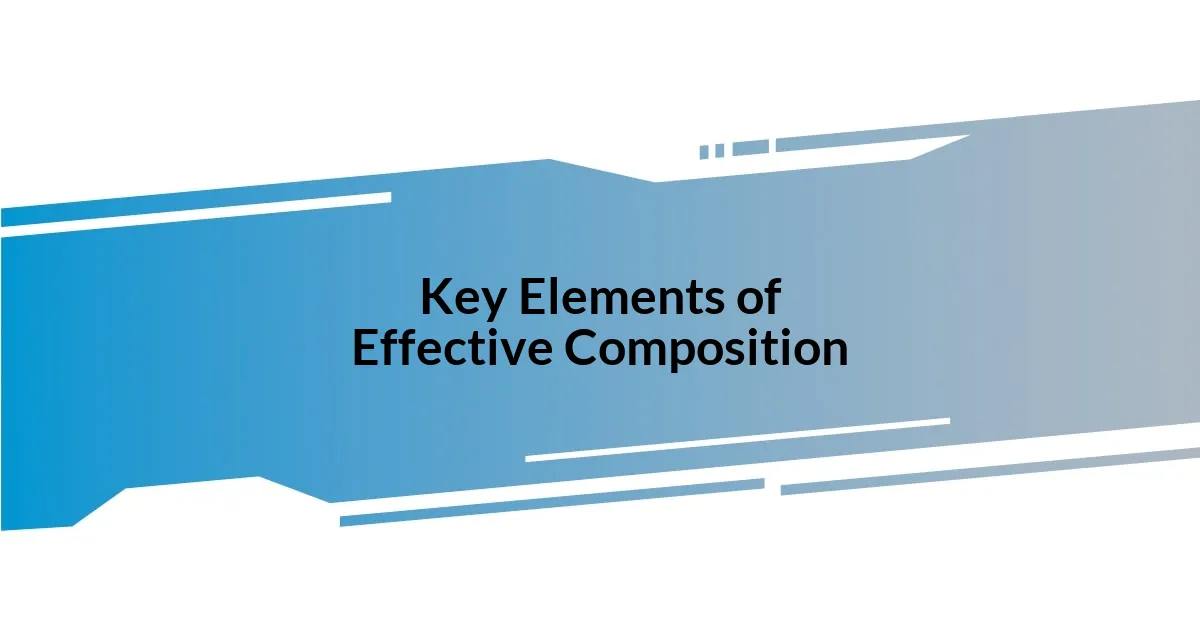
Key Elements of Effective Composition
Effective composition requires a keen understanding of structure and harmony. I vividly recall the first time I structured a piece based on the classic verse-chorus format. As I worked through the transition between sections, I felt the emotional lift of the chorus resonate with my listeners. This balance between repetition and novelty is essential—too much of either can lead to disinterest or confusion.
Another key element is melody. I’ve discovered that a memorable melody often serves as the heart of a composition. When I wrote a piece for my friend’s wedding, I focused heavily on crafting a melody that would evoke joy and nostalgia. It wasn’t just about notes; I aimed to capture a moment and the feelings tied to it. Simple yet poignant melodies can stick with us long after the music fades, punching through the noise of our everyday lives.
Lastly, rhythm plays a vital role in composition. My experience with rhythm is akin to the heartbeat of a song—without it, there’s a lack of pulse. While studying various rhythms, I experimented with syncopation, which added an unexpected twist to my compositions. It taught me how playing with timing could enhance emotional delivery, turning a straightforward idea into something truly compelling.
| Element | Description |
|---|---|
| Structure | Organizes the flow of the composition, balancing repetition and novelty. |
| Melody | The core theme that evokes emotional responses and connects with listeners. |
| Rhythm | Establishes the pulse of the music, adding texture and depth through variations. |
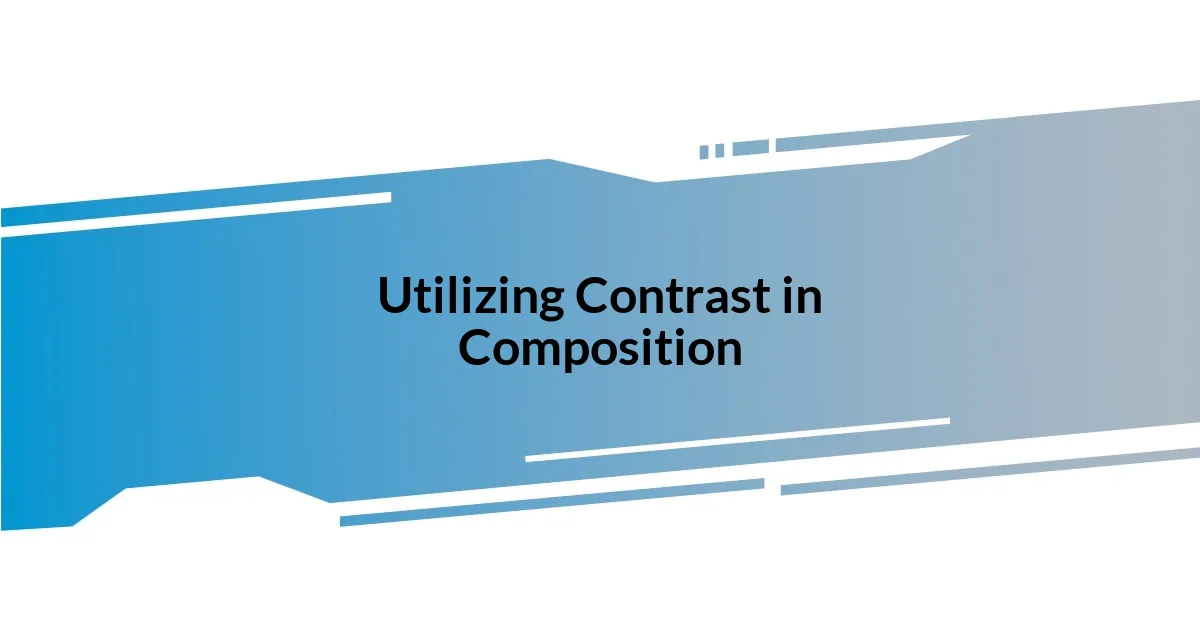
Utilizing Contrast in Composition
Utilizing contrast in composition can profoundly affect a listener’s experience. I remember the thrill of contrasting soft piano sections with explosive orchestral bursts in one of my compositions. This shift grabbed attention and elicited genuine emotional responses, as the quiet moments allowed the powerful crescendos to shine even brighter. It’s all about creating tension and release, engaging the listener in a dynamic journey.
To effectively implement contrast in your compositions, consider these techniques:
- Dynamic Changes: Alternate between soft and loud passages to heighten emotional impact.
- Melodic Variations: Introduce contrasting melodies that either harmonize or create dissonance, adding depth.
- Textural Differences: Use varying instrumentation or vocal arrangements to keep the sound palette fresh and engaging.
- Rhythmic Contrasts: Experiment with contrasting tempo speeds to create an evolving sense of time within the piece.
Employing these strategies has enriched my work, allowing me to convey themes with greater clarity and emotion.
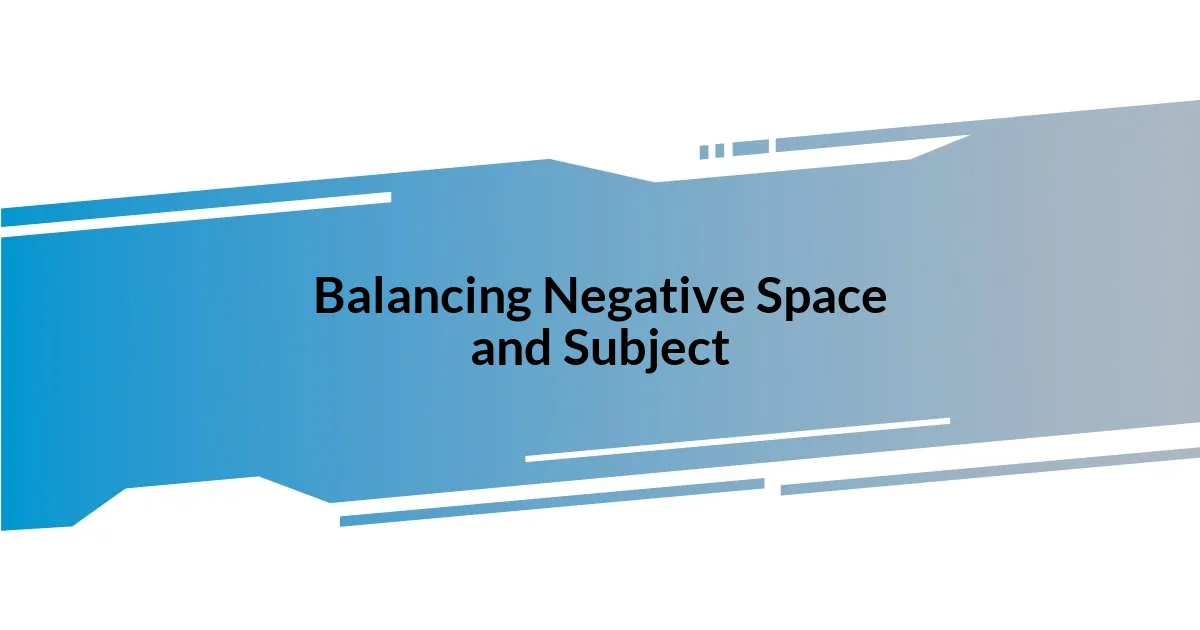
Balancing Negative Space and Subject
Finding the right balance between negative space and the subject in composition can be quite transformative. I recall a moment when I intentionally left a section of silence in a piece I was developing. That void drew attention to the melody that followed, allowing it to resonate much deeper with my audience. Have you ever considered how a little emptiness can amplify a key point in your work?
When I think about negative space, it reminds me of the beauty of simplicity. I once crafted a song that relied heavily on sparse instrumentation, leaving space for the listener’s imagination. Those moments of quiet became as significant as the notes I played. It made me realize that sometimes, what’s not there can speak volumes about what is.
Moreover, I’ve discovered that too much clutter can overshadow the essence of a subject. I remember producing a track overloaded with layers, thinking it would enhance the listener’s experience. However, it was only when I stripped it back that the real emotion shone through. That taught me that balance is key; a thoughtfully placed gap allows a powerful subject to breathe. Don’t you think that less can truly be more in composition?
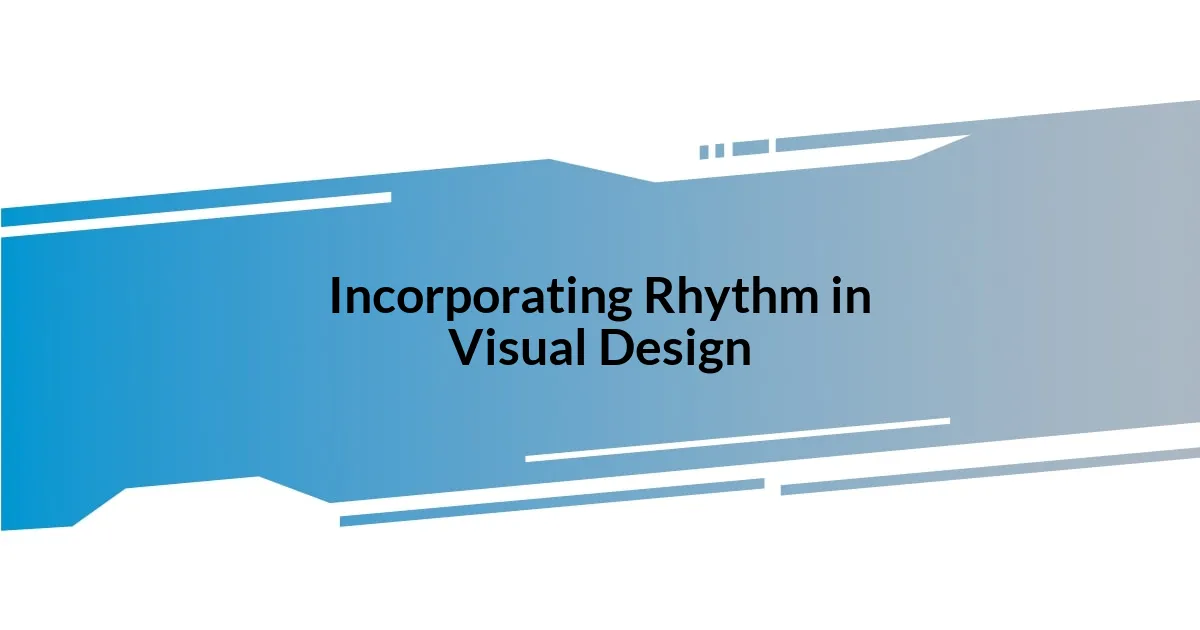
Incorporating Rhythm in Visual Design
Incorporating rhythm into visual design is a captivating way to guide the viewer’s experience. I often find that rhythm acts like an unseen conductor, orchestrating how our eyes move across a composition. For instance, when designing a poster, I paid close attention to the placement of elements in a deliberate rhythm. This rhythmic flow not only drew the viewer’s gaze but also evoked an emotional reaction, almost like a visual melody unfolding. Have you ever noticed how certain layouts naturally make your eyes dance from one point to another?
Another approach I love is using patterns to create visual rhythm. The last time I worked on a website, I created a series of repeating shapes and colors. This pattern established a sense of harmony and repetition, giving the design a lively beat. It was fascinating to see how the viewers became more engaged, almost like they were subconsciously tapping their feet to a rhythm. It made me wonder—can you feel the pulse of a design through its structure as you do in a piece of music?
Lastly, I believe that varying the rhythm can add depth and interest. I recall when I tackled a brochure design; I interspersed bold graphics with white space in an irregular pattern. This rhythm variation not only created excitement but also provided breathing room for the reader. I often ask myself if the unexpected moments in design can create a stronger lasting impact. The answer seems to be yes, and it’s a reminder that rhythm isn’t just for sound; it can breathe life into visual compositions too.
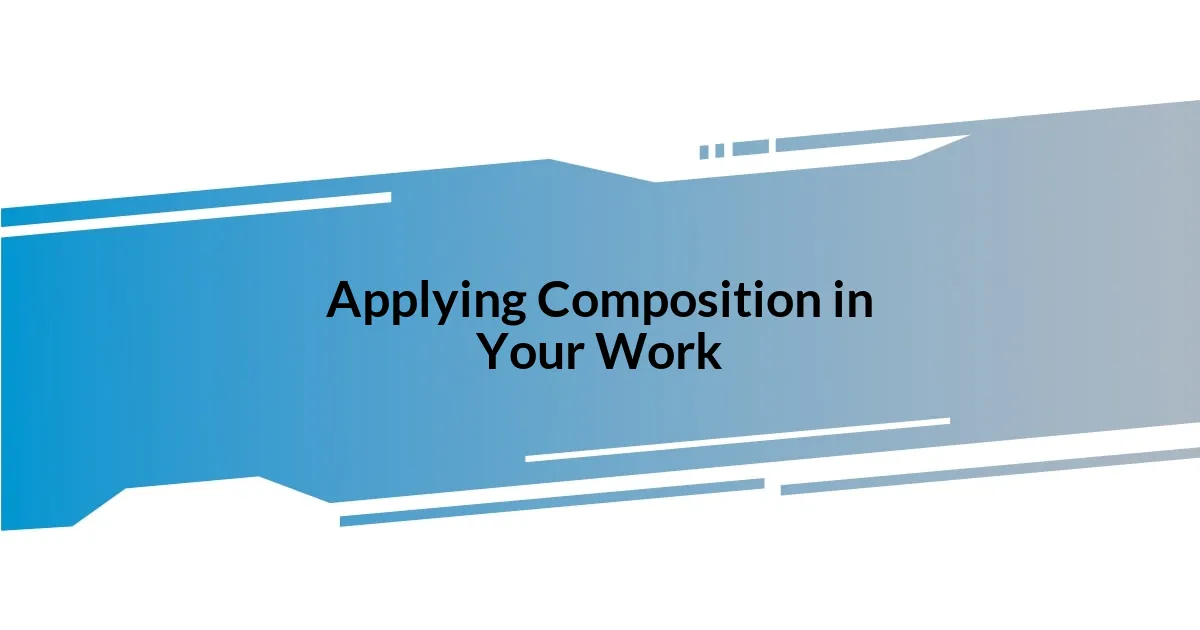
Applying Composition in Your Work
Applying composition techniques in our work can revolutionize not only how we create but how others perceive our creations. I remember when I decided to experiment with layering textures in a digital artwork. By thoughtfully overlapping different materials, I was able to create a rich tapestry that engaged viewers on multiple levels. Feeling that depth made me reflect: have you tried using layers to add complexity to your projects?
Another method I’ve embraced is the strategic use of color contrasts. In a recent painting, I juxtaposed vibrant hues against muted backgrounds, which brought elements to life. I was mesmerized by how the lively colors almost seemed to pulse off the canvas, inviting viewers to explore deeper. It struck me that color isn’t just visual; it’s visceral. How does color play a role in the emotional journey of your work?
Lastly, I’ve learned to trust my intuition when deciding how to frame my subjects. During a photo shoot, I played with unconventional angles and cropping. One shot that initially seemed awkward turned out to convey a poignant story that resonated with many. It taught me the beauty of trusting your instincts; sometimes, the most unexpected approaches yield the most remarkable results. Have you allowed yourself to explore beyond the conventional in your creative journey?